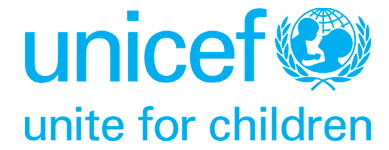ODISHA: PROFILE |
|
No. of districts : |
30 |
No. of Blocks |
420 |
Rural population |
83.3% |
Urban population |
16.7% |
SC population : |
17.1% |
ST population : |
22.8% |
Literacy : |
73.45% |
Male literacy : |
82.4% |
Female literacy |
64.36% |
Rural female literacy |
60.7% |
Sex ratio |
978 |
Child sex ratio |
934 |
Source: Census 2011 *State Secondary Report Card UDISE 2013-14 |
|
Odisha: EDUCATION PROFILE 2013-14 |
|
ELEMENTARY |
|
No. primary schools |
36339 |
No. of elementary schools |
67565 |
No of KGBVs |
182 |
No of Ashramshalas |
52* |
% Teachers in govt. elementary schools |
75.57 |
Enrolment ratio girls to boys –PS |
0.93 |
Enrolment ratio of girls to boys - UPS |
0.95 |
PTR Primary |
20 |
PTR Upper Primary |
14 |
Ratio of primary to upper primary schools |
1.02 |
SECONDARY |
|
No of secondary schools |
8423 |
Hostels for girls |
130 sanctioned( one in each EBB) |
Ratio of girls to boys enrolment |
0.99 |
Total Teachers |
63008 |
Ratio of UPS to Secondary schools/sections |
3.31 |
Source: NUEPA, Elementary & Secondary Education Progress towards UEE, Flash Statistics, UDISE 2013-14 Flash Statistics, Secondary Education, UDISE 2013-14 # Hostels sanctioned by GOI, PAB 27.10.14 |
|
Odisha is a tribal dominated state with a tribal population of 22.8%. Out of total 30 districts 17 Districts are under Tribal Sub Plan and remaining 13 districts belong to Special Component Plan. Odisha also has a significant rural population at 83.3%. he districts of Western and Southern Orissa are considered as some of the most backward districts in the country. The 8 districts of Malkangiri, Koraput, Nabrangapur, Kalahandi, Raygada, Nuapada, Balangir and Sonepur which constitute the erstwhile KBK ( Kalahandi, Balangir and Koraput) region, while rich in forest resources are educationally and developmentally backward districts. With a long coastline Odisha is visited by natural disasters like cyclones at frequent intervals. Migration is an endemic problem, especially child migration in Western Odisha.
Census 2011 reports that while female literacy at 64.36 is not much lower than the national average of 65.46, rural female literacy is at 60.7%. Odisha has 7 districts i.e. Gajapati, Naupada, Kalahandi, Raygada, Nabrangapur, Koraput and Malkangiri where the female literacy rate ranges between 46% to about 35%. Sex ratios in Odisha are significantly higher than the national averages. However, the child sex ratio has come down from 953 in 2001 to 934 in 2011 highlighting a worrying trend as far as girls are concerned.
The educational challenges before the state are quite enormous. Odisha has 172 blocks along with an additional 13 blocks in scheduled areas identified as Educationally Backward Blocks across 21 districts. 18 districts have been listed as districts with left wing extremist activity. All these contribute to the persistence of educational backwardness. Consequently 18 districts have been specified as Special Focus Districts for a targeted approach to address educational gaps and inadequacies.
Odisha has the highest percentage of Out of School Children at 6.10%, of these boys are 6.31% and girls are 5.58%. It is estimated that around 30% are never enrolled and around 54% are drop outs.
At the elementary the importance of the Government school cannot be overstated in Odisha. 86.45% of elementary schools are government or government aided schools. 83.87% of the total enrolment at the elementary level is in government schools. Given the linguistic and locational diversities, initiatives in the government schools can have far reaching results.




